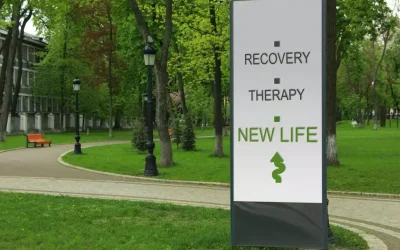Numerous studies have shown that mind-body relaxation reduces the use of drugs and alcohol and is effective in long-term relapse prevention [28,29]. Relapse-prevention therapy and mind-body relaxation are commonly combined into mindfulness-based relapse prevention [30]. Individuals use drugs and alcohol to escape negative emotions; however, they also use as a reward and/or to enhance positive emotions [11]. For example, individuals work hard to achieve a goal, and when it is achieved, they want to celebrate.
Create a file for external citation management software
- Cognitive restructuring can be used to tackle cognitive errors such as the abstinence violation effect.
- For example, individuals work hard to achieve a goal, and when it is achieved, they want to celebrate.
- The initial transgression of problem behaviour after a quit attempt is defined as a “lapse,” which could eventually lead to continued transgressions to a level that is similar to before quitting and is defined as a “relapse”.
- We smoke a cigarette, avoid support group meeting, or miss our regular exercise appointment.
- Counteracting the drinker’s misperceptions about alcohol’s effects is an important part of relapse prevention.
This is when people are at risk of relapse, when they are unprepared for the protracted nature of post-acute withdrawal. Clinical experience has shown that when clients struggle with post-acute withdrawal, they tend to catastrophize their chances of recovery. The cognitive challenge is to encourage clients to measure their progress month-to-month rather than day-to-day or week-to-week. A setback can be any behavior that moves an individual closer to physical relapse. Some examples of setbacks are not setting healthy boundaries, not asking for help, not avoiding high-risk situations, and not practicing self-care.
Abstinence Stage
- Along with the client, the therapist needs to explore past circumstances and triggers of relapse.
- A warning sign is when clients ask for professional help and consistently ignore the advice.
- Relapse prevention initially evolved as a calculated response to the longer-term treatment failures of other therapies.
- Clinical experience has shown that this stage usually lasts 2 to 3 years.
- “Staying in the moment” and being mindful of urges are helpful coping strategies4.
This stops clients from making global statements, such as, “This proves I’m a failure.” When individuals take an all-or-nothing, dichotomous view of recovery, they are more likely to feel overwhelmed and abandon long-term goals in favor of short-term relief. Principles of relapse prevention have been used in the treatment of sex offenders. A high-risk situation is defined as a circumstance in which an individual’s attempt to refrain from a particular behaviour is threatened. While analysing high-risk situations the client is asked to generate a list of situations that are low-risk, and to determine what aspects of those situations differentiate them from the high-risk situations. Seemingly irrelevant decisions (SIDs) are those behaviours that are early in the path of decisions that place the client in a high-risk situation. For example, if the client understands that using alcohol in the day time triggers a binge, agreeing for a meeting in the afternoon in a restaurant that serves alcohol would be a SID5.

Relapse Prevention Strategies and Techniques for Addiction

As their tension builds, they start to think about using just to escape. By the time most individuals seek help, they have already tried to quit on their own and they are looking for a better solution. This article offers a practical approach to relapse prevention that works well in both individual and group therapy.
- Now is the time to put our plan into action or we increase the risk of a lapse.
- This imagery technique is known as “urge surfing” and refers to conceptualizing the urge or craving as a wave that crests and then washes onto a beach.
- The therapist also can use examples from the client’s own experience to dispel myths and encourage the client to consider both the immediate and the delayed consequences of drinking.
- Many successful treatment plans are specifically tailored to each individual.
- Like the conceptualization of urges and cravings as the result of an external stimulus, this imagery fosters detachment from the urges and cravings and reinforces the temporary and external nature of these phenomena.
Covert Antecedents of High-Risk Situations

It helps them to know that there is usually only a small percent of their lives that needs to be changed. It can also be assuring to know that most people have the same problems and need to make similar changes. One of the most notable developments in the last decade has been the emergence and increasing application of Mindfulness-Based Relapse Prevention (MBRP) for addictive behaviours. The myths related to substance use can be elicited by exploring the outcome expectancies as well as the cultural background of the client. Following this a decisional matrix can be drawn where pros and cons of continuing or abstaining from substance are elicited and clients’ beliefs may be questioned6.
Clients are often eager to make big external changes in early recovery, such as changing jobs or ending a relationship. It is generally felt that big changes should be avoided in the first year until individuals have enough perspective to see their role, if any, in these issues and to not focus the abstinence violation effect refers to entirely on others. The transition between emotional and mental relapse is not arbitrary, but the natural consequence of prolonged, poor self-care. When individuals exhibit poor self-care and live in emotional relapse long enough, eventually they start to feel uncomfortable in their own skin.
Overview of the RP Model
- One recent large-scale research effort assessing the RP model was the Relapse Replication and Extension Project (RREP), which was funded by the National Institute on Alcohol Abuse and Alcoholism (Lowman et al. 1996).
- Once an individual has had one drink or one drug use, it may quickly lead to a relapse of uncontrolled using.
- Clinical experience has shown that occasional thoughts of using need to be normalized in therapy.
- The expected drug effects do not necessarily correspond with the actual effects experienced after consumption.
- A high-risk situation is defined as a circumstance in which an individual’s attempt to refrain from a particular behaviour is threatened.
- Even when alcohol’s perceived positive effects are based on actual drug effects, often only the immediate effects are positive (e.g., euphoria), whereas the delayed effects are negative (e.g., sleepiness), particularly at higher alcohol doses.
